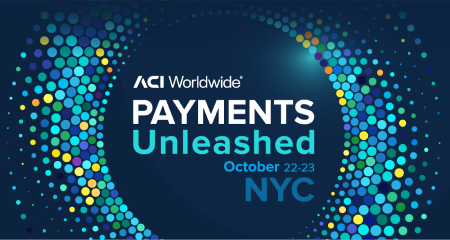Here are the four biggest trends that I see impacting the market in India:
- Blurring of lines between commerce and payments
- Shift from customer experience to customer engagement
- Trust in digital transactions is critical – but under severe threat
- New technologies are radically altering both payment processes and business models
The lines between commerce and payments are blurring
Merchant payments are at the epicenter of the disruption that is going on, with payment services for small and medium-sized merchants (SMEs) increasingly integrated with other business software and POS systems. The payments value chain is becoming digitized, and payments are increasingly and integrated part of the ‘commerce journey.’
Banks in India (and around the world) are launching digital wallets in a bid to remain competitive. State Bank of India (SBI) launched the State Bank Buddy mobile wallet in August 2015; as of March 2016, 4.8 million transactions valued at USD $35.1 million (INR 2.3 billion) had been made. Other digital wallets launched by banks include Pockets (ICICI Bank) and Lime (Axis Bank) in 2015. Service providers including Paytm, Oxigen wallet and FreeCharge are all bringing competition to the marketplace through their new digital payments offerings.
In a survey of fintech workers [PDF], it was found that 94% shop online monthly, with 27% shopping online more than 10 times per month. 20% choose an alternative payment type as their preferred payment method, reflecting the increasing demands of consumers in this regard.
From customer experience to customer engagement
Banks understand that digital channels are the way in which customers interact with them, and consequently, digital investment priorities are starting to shift from customer experience to customer engagement. While enhancing customer experience is important, developing digital channels as customer engagement platforms is now seen as critical to the success of banks. The ability to personalize communications, proactively respond to events, or prevent fraud is key to improving loyalty and retention, which leads to the additional cross-sell opportunities.
As a response to this trend, digital-only banks have launched across the world. Singapore-based DBS Bank launched India’s first mobile-only bank, digibank, in April 2016. Customers are entitled to an unlimited number of cash withdrawals and are offered cashback and discounts on in-store and online purchases. Customers can open accounts at any of the bank’s partner outlets simply by giving Aadhaar Card details and biometrics for authentication.
The Reserve Bank of India has also approved many non-banking financial companies to set up payment banks, enabling them to focus on engaging rural customers. These companies aim to provide low-cost savings accounts, remittance and payment services for the predominantly rural and traditionally unbanked population.
Trust in digital identity and transactions underpins every interaction, but is under attack
India saw a rise in malware attacks on the banking and finance sector in Q4 2016, and understandably, Indian consumers are concerned with the risk of payment card fraud. In the aforementioned survey of fintech workers [PDF], it was found that 7.5% have experienced fraud. And while the banking channel was perceived by consumers to be the most secure for financial data, online and mobile phone purchases were perceived to be the least secure channel.
Trust underpins every interaction – and digital trust emerges to establish and manage trust across myriad digital interactions, and relationships between businesses and individuals.
Distributed ledger technology (DLT) is identified by some as a new technology that can be used to keep a secure record of a person’s identity; a tamper-proof history of transactions that can allow users to choose who can access their personal data. According to PWC’s Fintech Trends Report, more than 47% of Indian financial institutions see this as a key use-case for DLT.
New and advancing technologies will revolutionize the industry: simplifying existing processes and creating new opportunities
Distributed ledger technology (more commonly known as blockchain technology) has started to alter the landscape of digital payments in India, and cross-border payments, securities and digital currency issuance are all being impacted.
Financial institutions in India, much like in the rest of the world, are launching proof of concepts for blockchain technology, targeting use cases such as cross-border remittances, trade finance and vendor financing. In October 2016, ICICI Bank executed India’s first international trade transaction and overseas remittance using blockchain, and Primechain Technologies, a year-old startup, created a Bankchain for banks. Bankchain gives access to a sandbox, allowing bank developers to discover and develop new blockchain solutions; currently it has 24 members and is on target to grow to 750 members in 2019.
The Reserve Bank of India has given positive signals to the marketplace, noting that the technology could bring transparency, efficiency and cost savings to the industry.
The future of payments in India
So, what does the future of payments look like in India? I believe that there are three trends that will continue to be present, and it is incumbent on players in the payment ecosystem to service these:
- Continued strong growth in alternative payments: Most of the top ten banks will see a significant drop in traditional card volume over the next five years, and the usage of ATMs will decline. Use of the mobile for immediate payments will accelerate, and consumers won’t see the need to withdraw cash to pay for small purchases.
- Mobile will become the primary interaction channel: Merchants and banks must create a seamless customer experience; whether transferring money or making a purchase, a simple and intuitive experience is needed. “Mobile first” as a design ethos already exists in many industries, and it will continue to disrupt the digital payments space.
- Fraud will continue to loom large: Real-time payments means there is an opportunity for real-time fraud. Players in the space will need to embrace new technologies such as artificial intelligence, pattern matching and machine learning to combat the evolving fraud threat for millions of new micro-transactions. Additionally, to prevent fraud in real-time, it needs to be integrated into core payment systems.




